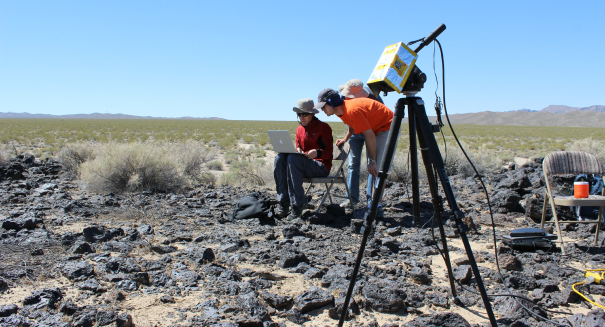
TextureCam is an advanced two-lens camera.
Even travelling at light speed, instructions from Earth take approximately 20 minutes to reach the Martian surface. This 40-minute roundtrip means real-time control of NASA’s Mars rover Curiosity is beyond the bounds of possibility. Should the space agency ever decide to send a rover to Jupiter’s moon Europa, the delay increases to more than 90 minutes.
“Right now for the rovers, each day is planned out on Earth based on the images the rover took the previous day,” said senior researcher Kiri Wagstaff, a computer scientist and geologist at the Jet Propulsion Laboratory. “This is a huge limitation and one of the main bottlenecks for exploration with these spacecraft.”
If future rover missions are to make discoveries on more distant worlds, NASA needs to change the way it delivers instructions to its rovers. Scientists have made significant progress towards achieving this goal with the creation of a new camera, called TextureCam, that snaps photos of alien surfaces and contemplates what the photos represent so that a rover can determine on its own whether to continue examining a particular area, or travel on.
“We currently have a micromanaging approach to space exploration,” Wagstaff said. “While this suffices for our rovers on Mars, it works less and less well the further you get from the Earth. If you want to get ambitious and go to Europa and asteroids and comets, you need more and more autonomy to even make that feasible.”
TextureCam is an advanced two-lens camera that should help future rover missions spend less time waiting for instructions from operators on Earth. Although Curiosity has the capability to tell the difference between rocks and other objects in the images it captures, the rover must transmit the photos to Earth for scientific examination of a particular rock. This process limits the range of the Curiosity’s mission.
“If the rover itself could prioritize what’s scientifically important, it would suddenly have the capability to take more images than it knows it can send back. That goes hand in hand with its ability to discover new things that weren’t anticipated,” Wagstaff posited.
A special processor examines the 3D photos taken by TextureCam’s stereo cameras. By identifying textures in the photos, the special processor differentiates between sand, rocks and sky. TextureCam will have the ability to either upload a high-resolution photo of an interesting rock back to Earth or send a message to the central processor to move closer to the rock and obtain a sample.
The study’s findings are described in greater detail in the journal Geophysical Research Letters.
Leave a Reply